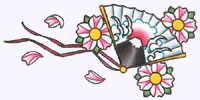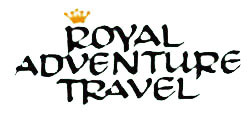
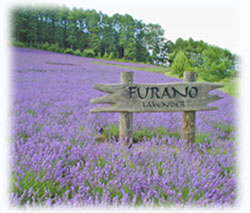
Royal Adventure Travel
2012
Summer in Hokkaido
3229 Koapaka St. Honolulu, HI 96819 phone: (808) 732-2211 fax: (808) 833-9942
Wonderful! Beautiful! Hokkaido – Meet Your Expectations In the summer, Hokkaido is rather dry with low humidity, and the weather is usually very pleasant. What is appealing about Hokkaido is not just the specious land, but also its fascinating scenery. you may call it an art work created by rich nature. From the hills decorated with various colorful flowers to natural wonders that makes you feel as if time had stopped a long time ago, fantastic hills veiled in the morning haze, and a breathtaking sunset over the shoreline.
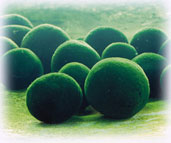
Depart: July 1, 2012 Return: July 12, 2012 Tour No: SIH-701-12
Tour Price per person: *$5895 Twin, $5870 Triple, $6485 Single
*Based on 2012 land price and 2011 bulk air fare
_________________________________________________________________________________
Day 1 – Sunday, July 1
HONOLULU
Leave Honolulu via air to Narita International Airport. Due to crossing the International Date Line, you will lose one day.
Day 2 – Monday, July 2
NARITA / CHITOSE
We arrive at Narita International Airport. After clearance of customs and immigration formalities, transfer to domestic departure lobby. Our connecting flight from Narita to Chitose Airport via a domestic flight will be in the early evening. We will arrive at Chitose Airport about an hour and a half later and will transfer to your hotel in the airport. Dinner is on your own. Your escort and guide will help you with your dinner plans. Accommodations at the airport hotel.
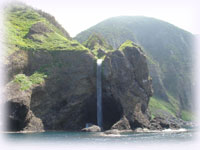
.Day 3 – Tuesday, July 3
CHITOSE / LAKE SHIKOTSU / LAKE TOYA / NOBORIBETSU (B) (D)
Breakfast at hotel. In the morning, we will proceed to Lake Shikotsu, famed for the clarity of its water. Along with nearby Lake Toya, it forms a part of the Shikotsu-Toya National Park. We go on the Lake Toya, visiting Showa Shinzan Volcano, a nationally designated natural monument. This mountain was formed in only 2 years from December 1943 to September 1945. "Showa" means the period of Emperor Showa (1926-1989), and "shinzan" means "new mountain. Our next destination Noboribetsu, derives its name from the local Ainu language meaning "a cloudy river tinged with white." Here we make a visit to "Jigoku" or the hotspring hells. This valley is the source of Noboribetsu's hot spring water (onsen). Jigoku-dani produces 10,000 tons of hot spring water a day. After the tour, we check in at the hotel to enjoy dinner and the onsen from the hot springs of the area. Dinner tonight at the hotel.
Day 4 – Wednesday, July 4
NOBORIBETSU / SHIRAOI / NISSHO PASS / OBIHIRO (B)
Breakfast at hotel. This morning we go to Shiraoi, where we will visit Porotokotan, the Shiraoi Ainu Village. We'll enjoy their songs, dances and stories of long ago. The traditional kuma-odori (bear dance) will be performed by the Ainu women dancers. The museum in the village which was opened in 1965 is a great place to learn about the culture of the original indigenous people of Hokkaido. We continue on to Obihiro driving across the Nissho Pass which connects central and eastern Hokkaido. After we check in to our hotel we'll take a walking tour of the downtown area. Obihiro is the only city located in the agricultural area of Tokachi. Tonight we can shop for area specialties and enjoy dinner of our own choice with the help of our escort and guide. Hokkaido has many delicious places to enjoy the local products.
Day 5 - Thursday, July 5
OBIHIRO / KUSHIRO / LAKE AKAN (B) (D)
Breakfast at hotel. We leave Obihiro and proceed to Kushiro. Along the way we stop at Tsurui Village, where we may be able to see the wild cranes in the wheat fields. Around 1963, primary school students began feeding Japanese Cranes in winter. The school was closed in 1974, and Mrs. Watanabe, a local resident, continued to feed the Japanese cranes. Over 100 Japanese Cranes come here during the winter season. The cranes can sometimes be seen here even during the summer season. Our next stop is the Japanese Crane Reserve in Tsuruoka, Kushiro. In August 1958, the reserve was opened with five Japanese Cranes, with the purpose of protecting and breeding the endangered Tanchozuru, Japanese Crane. The white crane with the bright red crest is truly a majestic sight to behold. Our next exciting adventure takes us on a cruise on Lake Akan in Akan National Park to visit the Marimo Museum. The bottom of this lake is inhabited by the miraculously spherical algae called "marimo." Marimo algae grow in fresh water and gather in large numbers to form green spherical bodies. It takes more than 100 years for natural marimo algae to grow to a diameter of 3 to 4 inches, but the marimo algae in Lake Akan are the largest in the world, growing to a diameter of 12 inches. They are designated as Special Natural Monuments. We continue on to our hotel for dinner and another wonderful opportunity to enjoy the onsen.
Day 6 - Friday, July 6
LAKE AKAN / LAKE MASHU / SHIRETOKO (B) (D)
Breakfast at the hotel. In the morning, we will proceed to Lake Mashu. Lake Mashu is classified as one of the most transparent lakes of the world. Moreover, it is well known that the lake keeps the constant water level in spite of the lack of in and out flows. A small island called Kamuish (divine island) is found at center of the lake. It is often called "foggy Lake Mashu" as it is frequently veiled by fog. On the way we visit Lake Kussharo, Japan's largest caldera lake, covering nearly 80 square kilometers. Numerous hot springs can be found around the perimeter of the lake. There are sunayu or “sand baths,” wherein warm water rises to the surface of holes dug into the lake shore. This lake has become famous for “Kusshie,” the gigantic, mysterious and unidentified creature thought to lurk in its waters. It is Japan's own version of the Loch Ness Monster. Our tour continues on to the Shiretoko Peninsular where we explore a part of the Shiretoko coastline on a boat cruise. This will permit us to get a look at the more remote parts of the national park, which are otherwise only accessible on foot. This evening we can enjoy dinner and a luxurious soak in the relaxing onsen after a day of travel.
Day 7 - Saturday, July 7
SHIRETOKO / ABASHIRI / SOUNKYO SPA (B) (D)
Breakfast at hotel. On our way to Abashiri we make a short stop to visit Oshin Koshin, one of the largest waterfalls in Shiretoko. Oshin Koshin in the Ainu language means Man and Woman. The falls are split into two, one slightly larger than the other, like a man and woman standing next to each other, which is how the falls got their name. Our next stop is a treat to the great outdoors…the Gensei Kaen or the Wild Flower Park at Koshimizu. The Natural Flower Garden is located on a long and narrow sand hill, between the Sea of Okhotsk and Lake Tofutsu. The Garden is part of Abashiri Quasi-National Park and attracts 500,000 visitors every year. Starting from late May, approximately 70 kinds of flowers bloom from season to season until around September. Views of the sea, lakes, mountains and the Shiretoko Peninsula also make this location very attractive. The Garden was designated as a "Hokkaido Heritage" by the prefecture in 2004. We then visit the Okhotsk Ryuhyo (drift iceberg) Museum where we can learn the science behind the sea ice by watching a wide screen introductory movie, entering a cool room filled with a few of the icebergs and seeing some of the small animals living below the ice. Our final stop for the day is to Sounkyo where we take a cable car to the top of Mt. Kurodake. We will be able to get a panoramic view of the surrounding high mountains of the Daisetsuzan National Park from the observatory. Tonight we have dinner at our hotel and another great opportunity to enjoy the relaxation of the onsen.
Day 8 - Sunday, July 8
SOUNKYO / NAYORO / CAPE SOYA / WAKKANAI (B) (D)
Breakfast at hotel. We depart Sounkyo for Nayoro via Shibetsu. From Nayoro we will proceed to Hamatonbetsu town. Hamatonbetsu's claim to fame is its freshwater Lake Kutcharo, a world famous wetlands area home to thousands of swans making their winter migration from northern Siberia to the southern climate of Japan. Hamatonbetsu faces the Sea of Okhotsk. We'll continue our drive along the coastline to Wakkanai. We stop at Cape Soya, where a monument marks the place as the northernmost point of Japan. Also in this location is the Japan's northernmost lighthouse which was first lit in 1885. Our final destination today is Wakkanai, the northernmost city in Japan. It is a port city sandwiched between the Sea of Japan and the Sea of Okhotsk. It is called the "wind town" because strong winds blow on so many days. The port is a center for fishing boats bringing in rich catches of shellfish, such as crab, sea urchin and scallop. Before we arrive at our hotel we make one more stop to visit Wakkanai Park, where there are some monuments depicting the history of the city. Tonight we have a delicious dinner and a luxurious soak in the onsen to complete our day.
Day 9 - Monday, July 9
WAKKANAI / RUMOI / ASAHIKAWA (B) (D)
Breakfast at hotel. We leave Wakkanai for Obira via Teshio and Tomae driving along the Sarobetsu swampy coastline. We take a brief tour of the Sarobetsu Natural Flower Gardens in Sarobetsu Plain which features wooden-plank walkways through swamps and scrubland that explodes with rhododendron, iris and lily flowers in June and July. In Obira we visit the "Former Hanadake Banya", a historical building, which reflects the prosperity of a fishery owner of an earlier time. It gives us an opportunity to be exposed to the history of Nishin Ban'ya (an old fisherman's residence). Then we visit the Otokoyama Sake Brewery which has a long history and tradition in Japan as a "superior sake" since the Edo period. It was the drink of choice of the Tokugawa Shogun family. A famous Ukiyoe artist, Utamaro, was so fond of Otokoyama sake that he painted the it in his art works. If time permits before we end our day we visit Kaimono Koen, a shopping plaza in Asahikawa where we will be spending the night. Tonight we will be enjoying dinner at the hotel.
Day 10 - Tuesday, July 10
ASAHIKAWA / BIEI / FURANO / SAPPPORO (B (D)
Breakfast at the hotel. We leave Asahikawa and proceed to Biei to enjoy its beautiful landscapes of patchwork fields displaying a rainbow of colors. The wide fields and hills of flowers have often been used as a backdrop for many Japanese commercials and TV programs. The bright colors of its fields attract thousands of visitors in July and August. We continue on to fields of flowers in Furano at the Tomita Farm and enjoy viewing the lavender, poppy and salvia in full bloom. After our tour of Furano, we will be proceeding to Sapporo via Takikawa along the Central Hokkaido Expressway. On the way to Sapporo we visit Okurayama Ski Jump, the site of the Sapporo Winter Olympics in 1972 as well as many other international tournaments including the World Cup. The Okurayama Ski Jump Stadium is a true mecca for ski jumpers in Japan. Tonight we enjoy a BBQ dinner at a leading restaurant in the city. After dinner, we enjoy a brief night tour of Susukino, the night life district. We spend tonight at a hotel located in the heart of city.
Day 11 – Wednesday, July 11
SAPPORO /OTARU / SAPPORO (B)
Breakfast is at the hotel . This morning our destination is Otaru. It will give you a very different look into modern Hokkaido. On June 25, 1994, the world's largest and second ever steam clock was installed in front of Otaru Orugoru (music box store). The British-style bronze clock measures about 18.5 feet high and weighs 1.5 tons. It was assembled by Mr. Raymond Sanders, who also made the first steam clock located in Gastown, Vancouver, Canada. A boiler sends steam into the clock, whose steam whistle blows hourly to tell the time. Every 15 minutes, the clock plays the same melody as the chimes of Westminster Abbey in London. This is favorite meeting spot for many who visit this city. Our visit includes the Otaru Orugoru (music box) Museum and the Kitaichi Glass-ware shops The music box befits this city of history and romance. Otaru Orugoru Emporium is Japan's largest shop specializing in music-boxes. Hundreds of models are on display, both large and small, including early 19th century antique examples. Glassware is another trademark of Otaru. Various glass workshops are located throughout the city. The Kitaichi Glassworks Company is a traditional maker of glassware and a local leader in the industry. It was established as the Asahara Glassworks in 1901. At first, it mainly manufactured oil lamps, a necessity among the settlers of Hokkaido, and then moved into making the glass buoys used in fishing during the great fishing period. The company name was changed to Kitaichi Garasu (glassworks) in 1971, and began making glass accessories and crafts. Otaru is the place to get your spill-proof shoyu bottles. We will also do a picture stop at the Otaru Canal which was built in the last days of the Taisho era. Half of it remains today. Although the canal helped Otaru flourish as a commercial seaport, changes that occurred in marine transportation diminished its role and soon it became less important. However, in the 1980s, its promenade was improved and gaslights were installed making it a favorite evening site for strolling. We return to Sapporo where we enjoy a city tour of Sapporo, visiting Odori Boulevard Park, a broad median of Odori ("large street") in the center of Sapporo. The park stretches over twelve blocks and offers a pleasant green space during the warmer months, while staging the annual Sapporo Snow Festival in February. Near Odori Park we can find the Clock Tower (Tokeidai) which is the symbol of Sapporo. The building was constructed in 1878 as a drill hall of the Sapporo Agricultural College. The US made clock was added in 1881. The Clock Tower has been designated an Important Cultural Property. Our final destination in Hokkaido is a visit to the Sapporo Brewery. Hokkaido is the birthplace of beer in Japan. "Sapporo Beer", one of the oldest and still most popular beer brands in Japan, has been brewed in Sapporo since 1877. It is now brewed and sold internationally. We’ll spend some time at the Tanukikoji Shopping Arcade for some shopping before we retire to our hotel and explore the area around our hotel for delicious dinner experiences. Dinner is on your own tonight.
Day 12 – Thursday, July 12
SAPPORO / CHITOSE / NARITA / HONOLULU (B)
Breakfast at our hotel. We depart Sapppro for the New Chitose Airport for our flight to Haneda Airport. We will transfer to Narita Airport by Limousine Bus. Our flight to Honolulu will depart from Narita International Airport. We will arrive in Honolulu on the same day.
In addition to meals and snacks served on our various flights, the tour includes 10 full breakfasts (Western or Japanese), and 7 delicious dinners (Western or Japanese), a variety of onsen experiences, 2 boat cruising experiences, a group picture, entrance fee to all the places as specified on the itinerary, a chartered air-conditioned motorcoach throughout the tour, an English speaking guide and the Royal Adventure Travel escort throughout the trip.
* * * * * * * * * * * * * * * * * * * * * * * * * * * * * * * *
This tour must have 20 committed members to be guaranteed.
____________________
Every effort has been made to produce this itinerary without error.
Should any occur, we reserve the right to correct.

